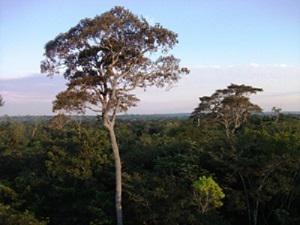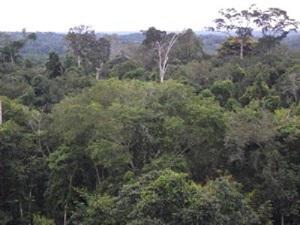Ulisses Moliterno de Camargo
This project will compare secondary-forest and old-growth site occupancy by central Amazon forest birds. Our goal is to document the conservation value and influence environmental regulation of secondary forests in the Amazon region.

Abandonment of unsuccessful farmland and pasture in deforested tropical areas is leading to an increasing cover of secondary forest worldwide. At the global level, secondary forests have already replaced more than 15% of the tropical old growth destroyed in the 1990s; in Brazil, in the most populated areas of rural Amazonia, approximately 30% of pre-colonial old-growth is now replaced by secondary forest. While there is controversy over the implications of increasingly abundant secondary forest for the future of tropical biodiversity, no one disputes the importance of understanding the relative value of old-growth and secondary-forest habitats for tropical forest species.

Our project will offer a quantitative comparison of bird species richness and community composition between secondary forest and old growth sites in the central Amazon. We aim to achieve unprecedented data quality and accuracy in parameter estimation through a combination of careful study design and technological improvements in field sampling. Using autonomous recording devices, we are able to sample 96 old-growth and secondary-forest sites spanning an area of approximately 350 square quilometers. We sample every site with temporal replication and keep a permanent record of sampled bird vocalizations. The central product of our fieldwork will be species-specific estimates of site-occupancy probabilities which will enable us to quantify the effect of forest type on bird occurrence while accounting for imperfections in the bird sampling process.
With the occupancy estimates in hand, we will be able to compare species richness between forest types and identify which species are likely to avoid one of the environments. This will enable strong inference about which species occur exclusively in old growth and thus constitute priority conservation targets as well as evidence of the uniqueness of old growth. Even though we expect to find a number of uniquely old-growth species, we also expect to find evidence of rapidly increasing bird species richness in our 20-28 year-old secondary forest sites. We anticipate that this will be a particularly relevant result for Brazilian Amazon environmental regulation. While secondary forests enjoy full protection in the highly-threatened Atlantic Forest biome, they still receive little or no protection in the Amazon area. We hope that our study will document the value of secondary habitats and provide a foundation for regulatory improvements that will stem the advancement of deforestation frontiers.